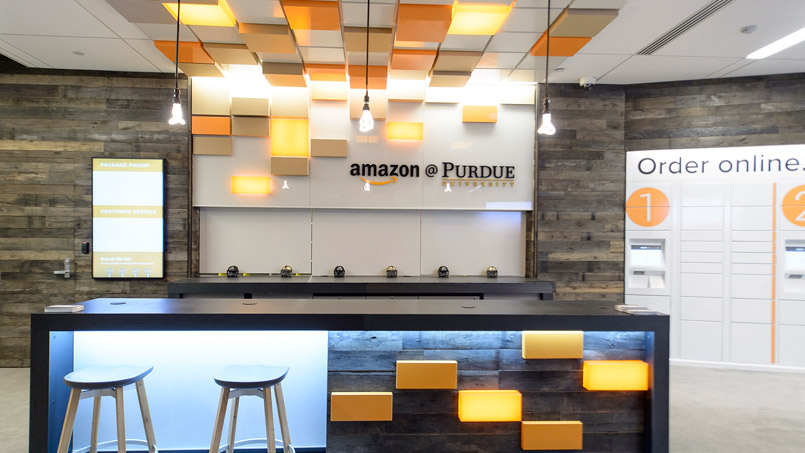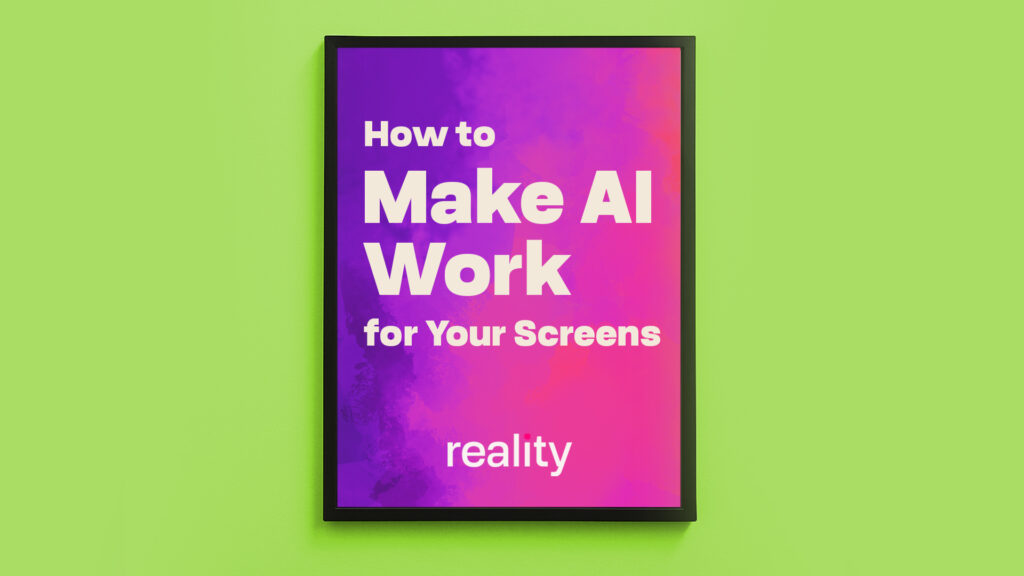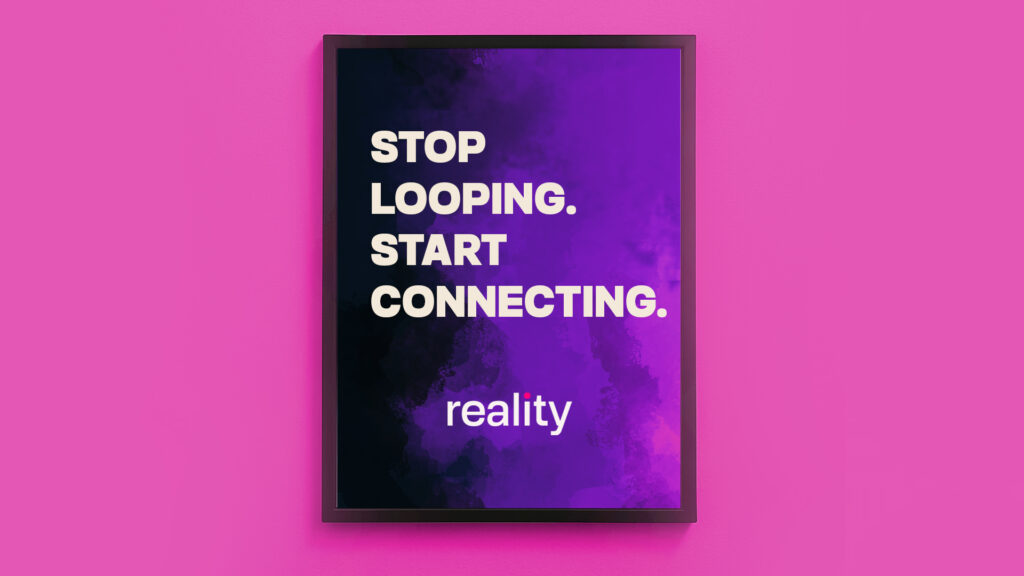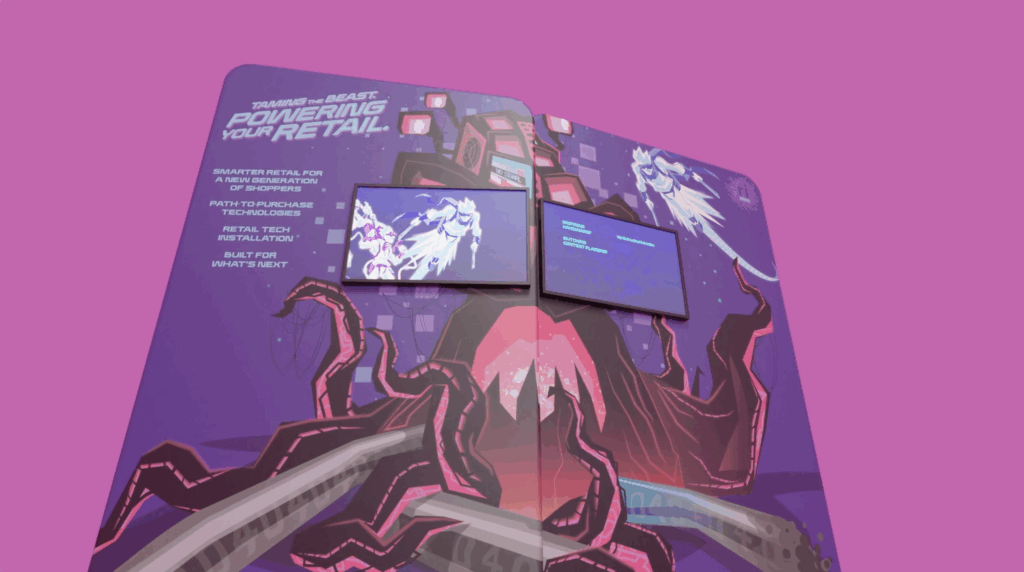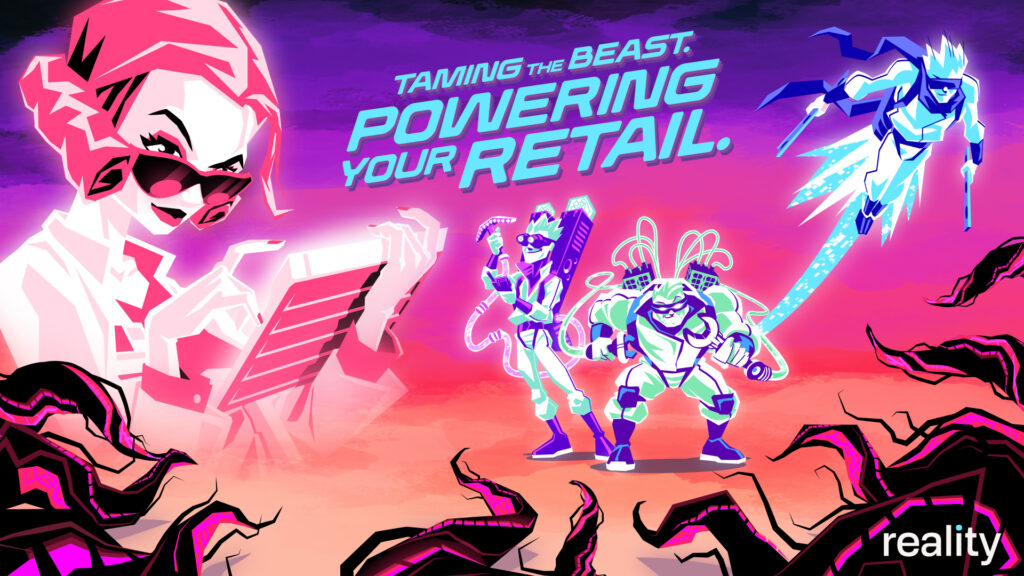Amazon was rumored to open a Manhattan Flagship in time for the holiday season 2014. This didn’t happen. Instead we’re seeing physical Amazon stores opening in more surprising locations- on college campuses.
Amazon has opened their first staffed retail store on the campus of the University of Purdue. The store will allow students to pickup orders and drop off returns, or rented text books. The Amazon employees working in the store are there to assist customers and answer questions. Orders are stored in lockers, which are accessed by the customer who types in a code for pickup. All orders will feature next-day shipping even if the student doesn’t have an Amazon Prime account.
Amazon has also signed deals to open stores at the University of California and the University of Massachusetts. They also plan on opening a second Purdue location in the spring.
Amazon’s Previous Experiments with Physical Stores
While a lot of attention is going to this as Amazon’s first physical location, it is important to note that Amazon has been experimenting in physical locations for some time now. A year ago, they installed “Kindle Kiosk” vending machines in airports and shopping malls.
Amazon also opened two pop-up stores in California this past holiday season. The store carried Amazon brand products, like their Fire TV, Fire phone, Fire tablets and Kindle e-readers. The goal of these pop-up stores was to allow customers to try out the Amazon branded devices before they purchased them as holiday gifts.
Amazon’s Strategy
Amazon surprised many consumers by opening smaller stores on college campuses rather than Flagships in New York City, where they have an office across from the Empire State Building. But strategically it makes sense for Amazon to start with smaller locations. In working with retail brands we recommend planning for smaller stores before a Flagship Store. Even though Amazon is an eCommerce giant, they will face new challenges in working within physical retail environments. Since they are already a well known company, all eyes are on them as they enter the retail space. Smaller stores will give them a chance to work out issues before they open a bigger and more high-profile store.
Photo Credit: Purdue University
